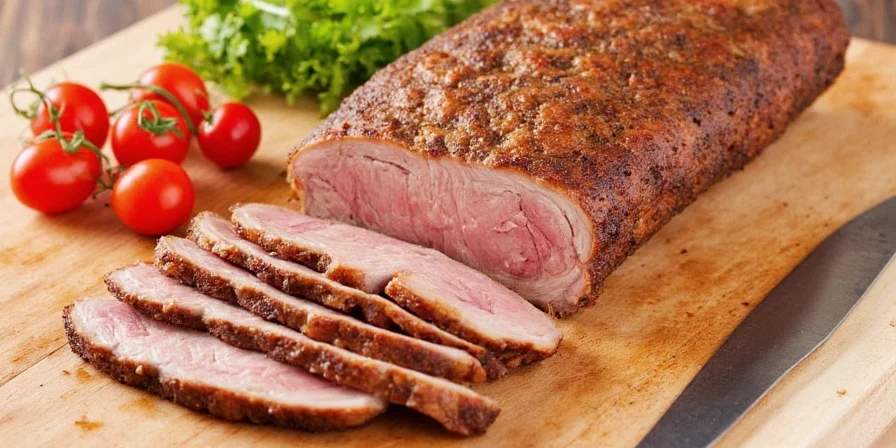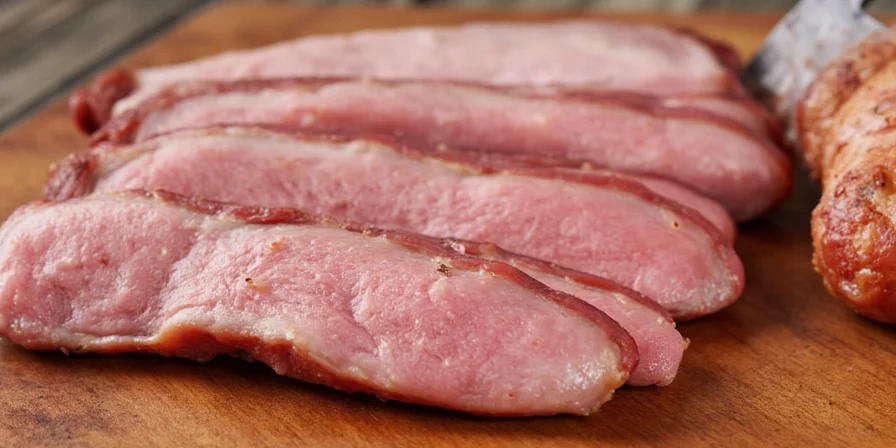Official Pork Temperature Guidelines by Cut
Understanding exact temperature requirements is critical for food safety and quality. The 145°F standard applies to whole-muscle cuts like chops, roasts, and tenderloin. For ground pork products, the safe minimum temperature increases to 160°F (71°C) due to bacterial distribution throughout the meat.
| Pork Cut | Safe Internal Temperature | Rest Period | Visual Doneness Indicator |
|---|---|---|---|
| Pork Chops (1-1.5") | 145°F (63°C) | 3-5 minutes | Opaque center with slight pink tinge |
| Pork Tenderloin | 145°F (63°C) | 5-8 minutes | Firm but springy texture |
| Shoulder (Pulled Pork) | 195-205°F (90-96°C) | 15-20 minutes | Falls apart easily when probed |
| Ground Pork | 160°F (71°C) | Not required | No pink color remaining |
Why 145°F is the Scientific Standard for Whole-Muscle Pork
Trichinella spiralis, the parasite historically associated with undercooked pork, is destroyed at 137°F (58°C). The USDA's 145°F recommendation includes a significant safety margin while preserving juiciness. At this temperature, myoglobin (the protein responsible for meat's red color) retains some pink hue in certain cuts, which is perfectly safe.
Thermometer Accuracy: Your Essential Food Safety Tool
Visual indicators alone cannot guarantee safety. Research from the Food Safety and Inspection Service shows that 38% of home cooks incorrectly judge pork doneness by juice color. A calibrated instant-read thermometer:
- Prevents undercooking that could cause foodborne illness
- Eliminates guesswork with smoked or marinated pork
- Ensures consistent results across different cooking methods
Insert the thermometer into the thickest part of the meat, avoiding bones or fat pockets for accurate readings.

Resting Time Science: Why It's Non-Negotiable
During the mandatory rest period after cooking, residual heat continues to cook the meat (carryover cooking) while proteins relax, allowing juices to redistribute. For chops and tenderloin, 5-8 minutes maintains optimal temperature while maximizing moisture retention. Larger cuts like roasts require 15-20 minutes to stabilize.
Cut-Specific Doneness Guide
- Chops & Cutlets: Remove from heat at 140°F - carryover cooking will reach 145°F during rest
- Tenderloin: Cook to 145°F then rest covered with foil to prevent drying
- Shoulder & Brisket: Requires higher temperatures (195-205°F) to break down collagen
- Ribs: 185-195°F for tender, pull-off-the-bone texture
Common Temperature Mistakes and Solutions
- Mistake: Relying on timer instead of thermometer
Solution: Always verify with calibrated thermometer, especially with variable cut thicknesses - Mistake: Not accounting for carryover cooking
Solution: Remove meat 5°F below target temperature to allow for residual heat rise - Mistake: Testing temperature too early
Solution: Wait at least 2 minutes after cooking before checking to allow heat stabilization
Special Considerations for Different Cooking Methods
Smoking requires different temperature management than grilling or roasting:
- Smoking: Maintain 225-250°F ambient temperature; check internal temperature every 30 minutes
- Sous Vide: Cook at precise 140°F for 1.5-4 hours depending on thickness, then sear
- Grilling: Use two-zone fire; move to indirect heat when 10°F below target temperature
Frequently Asked Questions
Is pink pork safe to eat at 145°F?
Yes. The USDA confirms that pork cooked to 145°F with a 3-minute rest is safe regardless of color. Certain cuts like pork shoulder may retain pinkness due to myoglobin stability even when fully cooked.
How do I calibrate my meat thermometer?
Use the ice water method (should read 32°F/0°C) or boiling water method (212°F/100°C at sea level). Professional kitchens calibrate thermometers before each service. Digital thermometers typically require calibration every 6 months.
What happens if I undercook pork to 140°F?
While 140°F meets minimum safety requirements with proper rest time, cooking to the recommended 145°F provides an additional safety margin against potential bacterial contamination, especially important for immunocompromised individuals.
Why does my thermometer show different readings in different spots?
Meat has uneven heat distribution. Take multiple readings in the thickest part of the cut, avoiding bones, fat pockets, and the cooking surface. If readings vary by more than 5°F, continue cooking and retest after 5 minutes.
Do I need to adjust temperatures for high altitude cooking?
Water boils at lower temperatures at higher elevations, but meat doneness temperatures remain the same. However, cooking times may increase by 25% above 5,000 feet due to lower boiling points affecting heat transfer.











 浙公网安备
33010002000092号
浙公网安备
33010002000092号 浙B2-20120091-4
浙B2-20120091-4